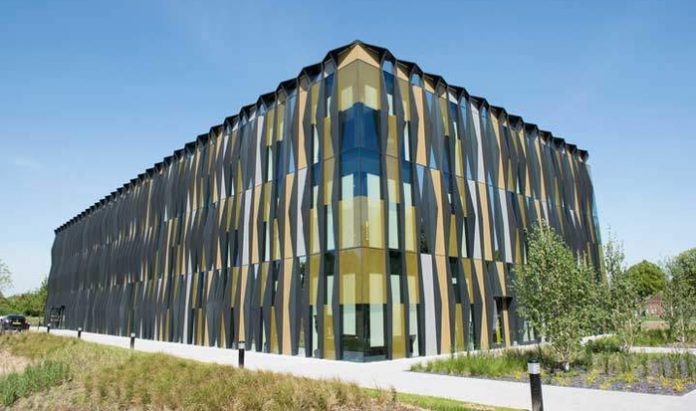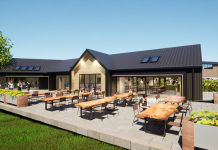For landlords, the challenge is providing space with flexible lease terms, access to amenities and ‘swing space’ for future growth, but at the same time as balancing covenant uncertainty, according to Savills’ latest Spotlight report:
The outlook for the Oxford office market – 2019 and beyond
- 2017 and 2018 showed a significant increase in take-up, well above the 10-year average. The expectation for 2019 is for take-up to be between 2017 and 2018 at the half-million mark.
- A significant number of occupiers are directly and indirectly linked to the universities. University spin-outs, new start-ups and growing SME companies have been driving demand.
- The economic outlook for Oxford, for the next five years, is positive. Oxford city area will see between 8-9% growth in ‘professional, scientific & tech’ employment. This results in a similar growth in economic output. However, delivery of commercial floorspace in the city centre will result in enhanced economic growth.
- At the end of the first half of 2019, take-up in the Oxford office market was around 125,000 sq ft, but there are deals in the pipeline that will result in the city posting take-up around the half-million mark. Pharmaceutical, medical and healthcare-related deals account for half the market.
- We expect to see top rents grow by 3.6% during the forecast period, as top rents hit £40 per sq ft for 2019. Smaller deals will see rents above this level.
- Growth in rents will occur this year and next, but then pause for a year, in 2021, as new office supply feeds through to meet increasing demand from existing occupiers and new entrants in to the city.
The Oxford investment market overview
During the first half of 2019, Oxford saw total commercial investment volumes of around £50 million, which is a similar level to that seen during H1 2018. The five-year average is £74 million, which was boosted by the CPPIB purchase of Milton Park for £200 million in 2017. Overall, the volumes so far in 2019 are positive when compared to the 10-year annual average of £54 million.
Three office deals dominate the overall total. Key office investment deals included Arlington Business Park, as a ‘special purchaser’ buying the remaining part of Oxford Business Park for circa £36.9 million.
Oxford prime yields are at 5.50% having remained stable during 2019.
Corporate investment in Oxford – H1 2019
During the last five years, Oxford headquartered companies have attracted nearly £2 billion of venture capital (VC) investment. Unsurprisingly, 58% has been within the healthcare sector, followed by 17% within ‘information technology’ (IT). Breaking this down further, 49% is within pharmaceutical and biotechnology, and 9% within healthcare devices (e.g. medtech). Software accounts for the majority of the IT total at a 15% share.
In total, corporate investment in Oxford totalled £532 million during the first half of 2019. Of this total, a significant 88% of the deals were related to the life science sector, which included companies involved with pharma, biotech, devices, oncology, specifically and digital health.
Early and later stage fundraising, for start-up and scale-up life science companies, usually involves venture capital (VC) funding. Capturing and assessing the opportunities of this type of corporate investment is important to track the growth and formation of companies.
Reviewing the scale of VC is a key indicator of the underlying growth prospects for new and establishing companies. In total, during the past five years, just over £827 million has been recorded as VC for the Oxfordshire region. This quantum of VC will create headcount growth as the companies begin to scale in a meaningful way. This higher volume of VC will eventually translate into office, laboratory and industrial demand in the city and surrounding areas, including the science and business parks.
A city on the move
Oxford is poised to deliver significant new commercial floorspace in the coming years, which will drive prosperity in the city
The academic and innovative nature of Oxford, with diverse existing industrial sectors, ensures that the city will benefit from the continued drive for technological discovery. Regardless of what form Brexit takes, the current and any future government will drive the prevailing Industrial Strategy. The aim of this strategy is to rise to the challenges that include, amongst other areas, quicker disease detection, quantum technologies, electric vehicles and digital security. Simply, Oxford will need to provide the best quality and quantum of commercial floorspace to cater for the needs of private and public sector organisations who have raised funding to address the challenges of the Industrial Strategy.
Moving back to property, one of the key question for office developers is “what types of space do I deliver?” Savills have recently published the latest What Workers Want survey results. This research, carried out exclusively for Savills by YouGov, asked Oxford office workers about their preferences and views of the office environment and the impact on their physical and mental health. The need for quiet space for focussed work, good views and proximity to green and open space were factors that were above the wider UK average. Public transport accessibility was below the UK average in terms of importance and car parking was above average. This reflects the out-of-town dominance of office supply in the city. However, with ‘proximity to relevant teams’ and the need for networking being above the UK average, it appears that a city-centre delivery of office space will most closely match the demands of the Oxford office worker in the future. Although, of course, the out-of-town market will still provide an important supply of office space to meet specific needs of occupiers, particularly those with larger requirements and the co-location of manufacturing, R&D and office requirements.
The availability of office-type space (including laboratories) has been on a downward trend for the past decade. As the market has moved towards a ‘new normal’ of 500,000 sq ft take-up in the past few years, the current supply level of around 900,000 sq ft shows less than two years of supply in the market.
The total development pipeline is approximately 6.6 million sq ft, which include short and long-term strategic sites. Of course, not all of this will come through in the near-term. As well as the key schemes around the city, including Harwell (pictured above), what is also exciting for the city is the development planned for sites in or adjacent to the city centre. Oxford North and the OxPens sites will provide the type of space, in terms of location, that attracts companies at all stage of their growth cycle.


















